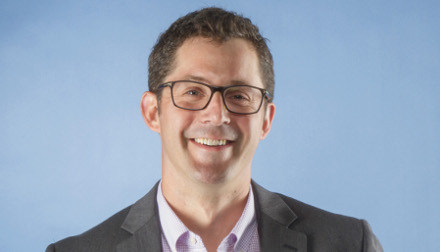Bringing Technology Alive at The Weather Channel
Jeremy Jones, head of innovation and product at The Weather Channel television network, explains how he got into TV graphics, how weather programming has changed over the years and why getting people to believe in new technologies is one of his top challenges.
KINGSLEY COOK: How did you start out in the TV/graphics industry? Was it something you always wanted to do?

Jeremy Jones
JEREMY JONES: The buzzword for me at The Weather Channel is ‘opportunity’. Starting with the company as a designer for the ad sales team, getting to where I am now meant seizing small opportunities that presented themselves along the way until I found myself joining the live TV graphics environment. I’ve been with the channel for 11 years.
KC: Can you describe your day-to-day role? What are your key objectives?
JJ: It depends on the weather! My focus depends on whether it’s a calm, ‘sunshine theatre’ or a ‘breaking weather’ kind of day.
The live breaking weather days get busy and we find ourselves solving problems quickly, which is very rewarding work. In those cases, I take on a support role for our team. When the big weather events happen—hurricanes, tornadoes and so on—I ask the teams what processes they need refreshing on, what systems aren’t working, what technologies need to be taken out and dusted off.
The professional video industry's #1 source for news, trends and product and tech information. Sign up below.
The focus is on the service we provide to viewers, to keep them safe and aware of what’s going on. On “sunshine theatre” days, I focus on roadmap priorities and future technology investments to keep us ahead of the game. It’s a lot of fun to work in a live environment where we have to fly by the seat of our pants when necessary.
KC: How important is the technology you use?
JJ: Technology is the glue that holds everything together here. Television is facing a decline in general so we have limited resources. The teams we work with are some of the best in the business, but they need to have the technology behind them as there’s now often one person doing the job of three.
KC: How has TV weather programming changed throughout your time in the industry?
JJ: I’ve witnessed tremendous changes, including the transition from SD to HD, which affected both TV programming and weather.
The importance of weather has grown in the local market, especially during breaking events, outpacing every other category. The move to better graphic presentations, the migration from SD to HD and the growing importance of weather reporting have changed programming to a point where we now put a premium on presentation.
We want it to be more than just a person standing in front of a green screen with a map of the local weather. This involves building beautiful studios sets to really showcase the weather, augmenting graphics into the set and immersing the audience into the story.
KC: What are the key challenges of your everyday role?

Jim Cantore with The Weather Channel illustrates a lightning strike using augmented reality graphics.
JJ: The one that stands out is getting people to believe in the technology.
When you bring in new technologies with a promise that they can help us deliver, the challenge is getting people to believe. Our use of real-time camera tracking is a great example of this. Feedback went from ‘are you crazy’ to ‘it’s part of our daily routine’ as we worked through the implementation.
KC: Are you working on any new technologies or innovations at the moment?
JJ: Real-time camera tracking is a big focus for us at the moment. We were seeking to augment graphics into our environment and saw a lot of green screen options that didn’t convince us. Then, our technology partner Vizrt presented an Ncam solution on its NAB booth and the rest is history.
We launched our real-time camera tracking solution in May last year, which enables our meteorologists to interact with stunning augmented reality graphics to explain the science of weather. It’s integrated into our graphics and production system and gives the talent and the camera complete freedom of movement.
A tracking system provides a stream of extremely accurate positional information, without the need for special markers in the studio, whether the camera is on a pedestal, a Steadicam or hand held.
We can now provide the viewer with an actual tornado, for example, that meteorologists have helped design and build. I’m not hesitant to say that we’re head and shoulders above anybody else presenting weather at this point. Real-time camera tracking allows us to be this leader in the industry.
I think the future will see us bring in data and information from an actual storm and have the storm recreated in the studio environment. It’s one of the premium items on our roadmap at the moment. We’ve got a lot of work to do, but it’s definitely on the horizon.
